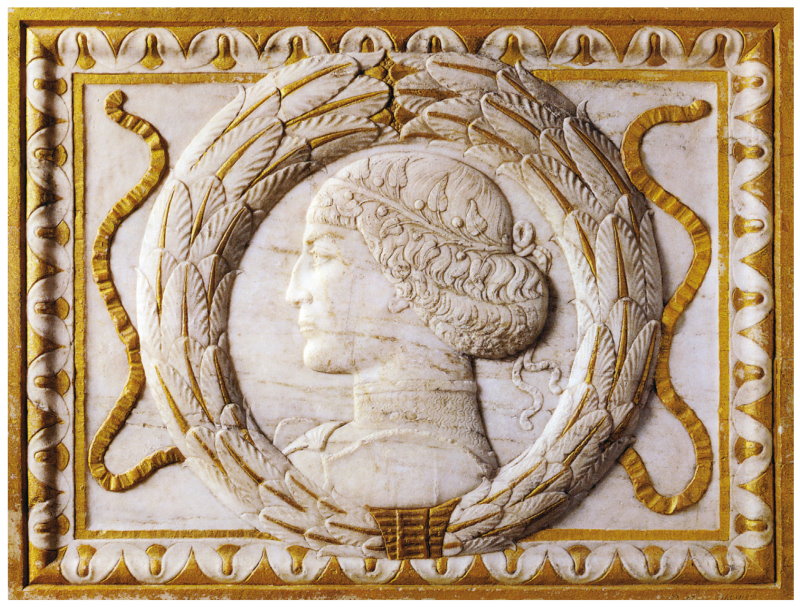
Walking around the city discovering places and historical figures
A walk in the city together with Eutyches or Sigismondo Pandolfo Malatesta, Alessandro Gambalunga or Amintore Galli, Guido Cagnacci or Giovanni da Rimini, is a way to discover the history of Rimini through personalities who lived here and their most tangible legacies, their houses or the buildings of which, at times, they were also architects.
Eutyches and the Roman Rimini
One of the most important national archaeological finds from the Roman era is the surgeon's house or rather Eutyches’ house, dated around the third century AD and brought to light in the center of Piazza Ferrari. It takes its name from the profession of its "Dominus", which became evident to archaeologists thanks to the very rich set of surgical instruments used in antiquity, the largest ever found. Eutyches, whose name is known today thanks to an inscription on his house, was probably an oriental surgeon who had followed the Roman legions in his youth and then decided to continue his profession by settling in Rimini, near the sea. It is said he was a cultured and refined man, and the mosaics and wall paintings, which enriched the rooms, testify this. Today the domus is an open-air museum, which can be visited by crossing the archaeological area on elevated walkways, completing the visit to the nearby Museum of the city where the finds are kept. Info: www.museicomunalirimini.it
Giovanni, Giuliano, Zangolo da Rimini and the influence of Giotto
In Rimini, the fourteenth century artists gave life to a pictorial season of the highest level: the Rimini school of the fourteenth century, which testifies the legacy of Giotto di Bondone who stopped here, around 1300, and painted the 'Crucifix', preserved in the apse of the Malatesta Temple. Dating back to this school, in the church of S. Agostino, the most complete and best preserved pictorial cycle in the city was found, a collective work of the brothers Giovanni, Giuliano, Zangolo da Rimini. On the walls of the presbytery you can admire splendid frescoes, which tell the life of St. John the Evangelist, together with the image of the blessing Christ and the Madonna in Majesty. Other masterpieces are on display in the halls of the City Museum, in the section dedicated to the 1300s in Rimini, while the Last Judgment, painted in the tympanum of the triumphal arch of the church's presbytery, is now on display in the new museum of contemporary art (PART- Palazzi dell’Arte)
Sigismondo Pandolfo Malatesta and the Rocca. Between the Middle Ages and the Renaissance
Sismondo Castle is the fortified residence commissioned by Sigismondo Pandolfo Malatesta, lord of Rimini, and designed by himself with the consultation of the great architect Filippo Brunelleschi. Begun in 1437, the fortress is an admirable example of Renaissance military architecture, conceived to be a formidable defense for the city but also an impressive manifestation of his family's power and prestige. It was this ostentation, which also gave the city extraordinary monuments such as the castle and the Malatesta Temple, to ruin Sigismondo, a great man of arms and conqueror of a large part of Romagna. It was disliked by the "neighborhood" and the Papacy with disastrous results for his house. Today the castle, which has been carefully restored, is about to become an integral part of the future “Federico Fellini International Museum”.
Alessandro Gambalunga and his Library
Palazzo Gambalunga was the home of Alessandro Gambalunga, who was born in Rimini in the mid-16th century from a rich merchant family. Thanks to its economic position, he was the promoter of an active city cultural circle. The patronage activity of the rich gentleman reached its peak with the construction of the new family palace and the creation of a rich collection of manuscripts and books, some of which were bound in the laboratory of the palace. Over the years Gambalunga created a considerable collection of books in which, on his death, in 1619, he donated through a will to his fellow-citizens for free consultation, thus creating one of the oldest public libraries in Italy. Today "La Gambalunga", with its historic rooms enriched by elegant shelves, book stands, artistic globes and a large collection of ancient illuminated manuscripts, is considered one of the most beautiful historical libraries in the world. Info: www.bibliotecagambalunga.it
Guido Cagnacci, between the Museum and the church of San Giovanni Battista
The painter Guido Cagnacci (1601-1663) had an adventurous and turbulent life. Born in Santarcangelo in Romagna and trained in Rome at the Guercino’s, he was banished from the city of Rimini because he tried to escape with a noble and rich widow. Aggressiveness and sensuality emerge, filtered by art, in his canvases, which in Rimini are kept in the City Museum (eg Portrait of a young friar, Cleopatra etc.) and in the Church of San Giovanni Battista, a few meters away from the majestic Arch of Augustus. Here is kept the altarpiece of the Carmelites, dated around 1630, which portrays three saints: Andrea Corsini, Teresa d’Avila, Maria Maddalena de 'Pazzi. With his Caravaggesque and sensual streak, critics judge him as one of the most authentic and brilliant artists of the seventeenth century.
Amintore Galli and the Theater in Rimini
The figure of Amintore Galli (1845-1919) in Rimini is linked to the city theater. Stage of great classical music, the Theater, inaugurated in 1857 on a project by Luigi Poletti, takes its name from the musician, music critic and composer who became famous nationally and worldwide, for the success of his ‘workers' anthem’ with the text written by Filippo Turati. The city wanted to pay homage to the musician in 1947 after the dramatic vicissitudes of the war, when it was heavily damaged. In 2018 the theater returned to its former glory thanks to a philological renovation that recovered the structure, the stuccoes and the decorations that make it a wonderful example of neoclassical style. Today, you can walk among the galleries and the stalls guarded by the iconic golden griffins, and, on request, visit the "bowels" of the theater that host a multimedia exhibition where, during the renovation, an archaeological area of Roman times was rediscovered. Info: www.teatrogalli.it

©2016-2023 Assessorato al turismo / Comune di Rimini, Piazzale Fellini 3 47921 - Rimini - +39 0541 704587 / Ufficio Informazioni Turistiche (IAT) +39 0541 53399 / fax +39 0541 56598 / Statistiche web


